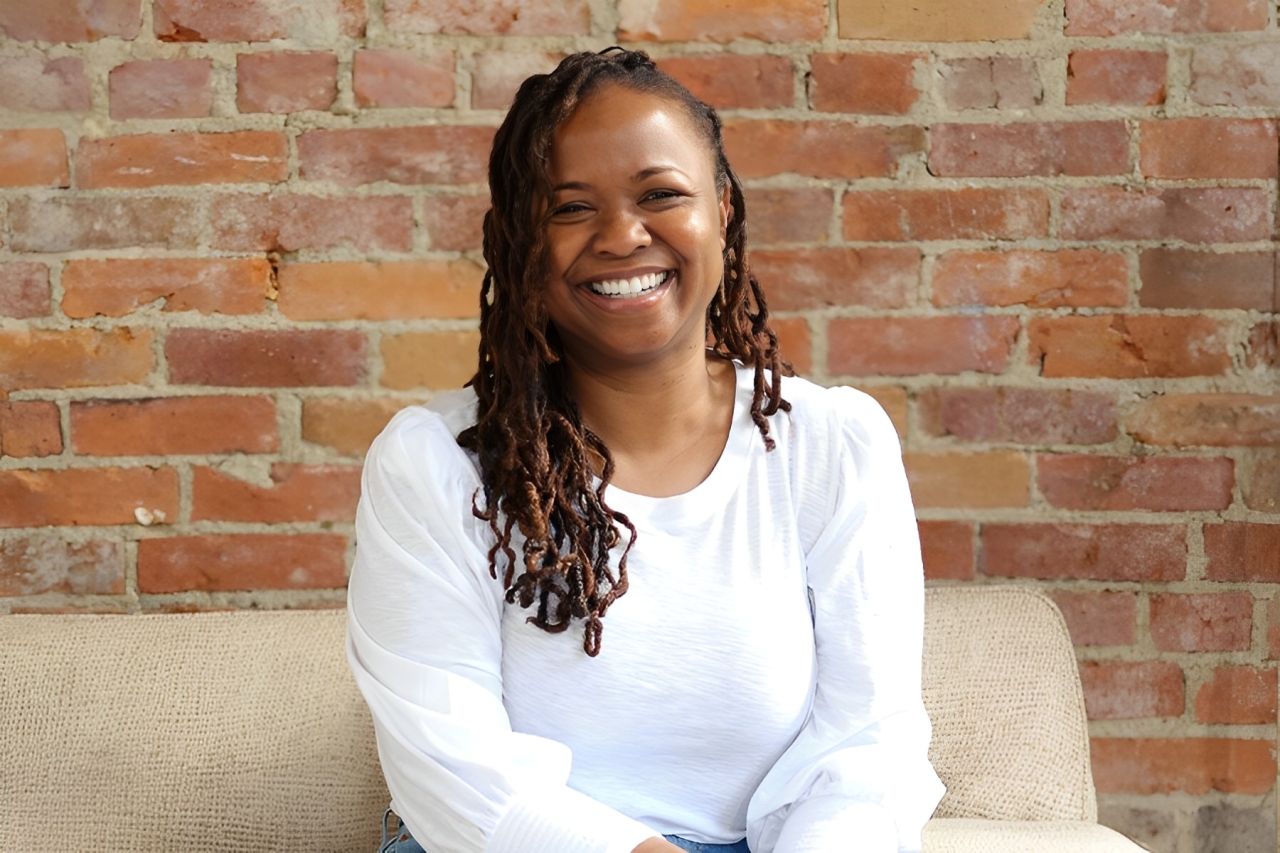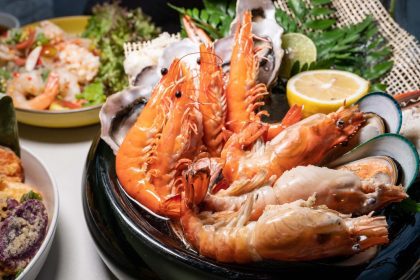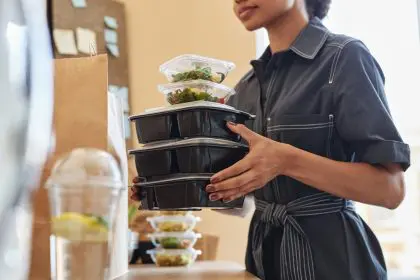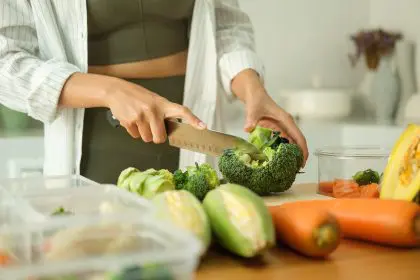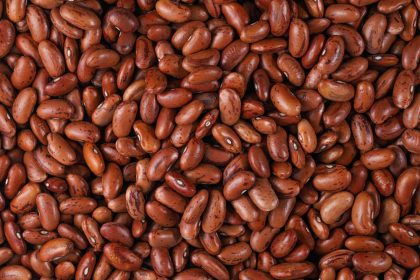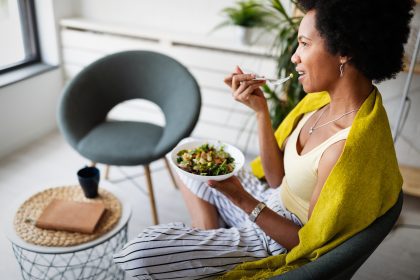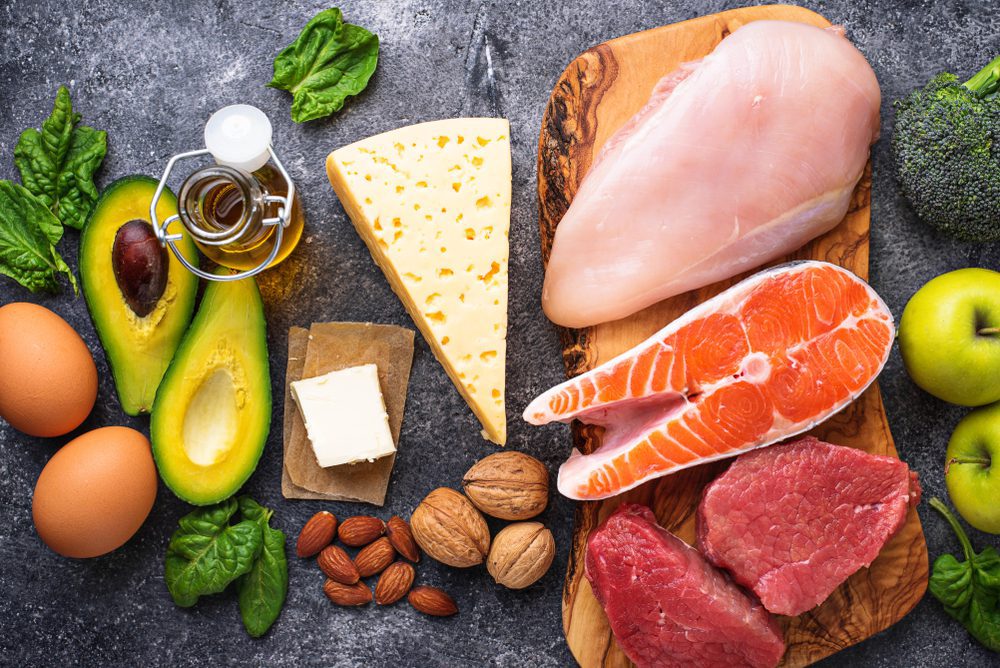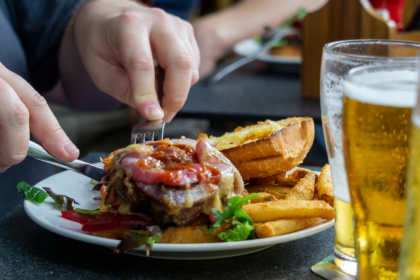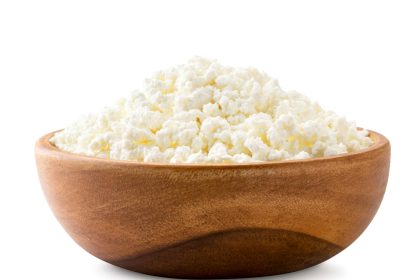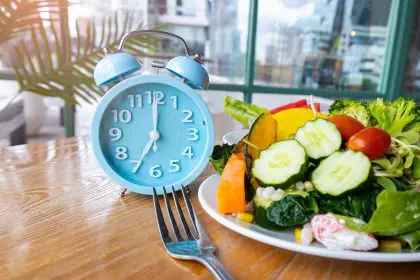In an enlightening conversation with rolling out, vegan food chef Makini Howell reveals her remarkable transition from FUBU menswear designer to acclaimed plant-based culinary innovator. Her journey spans from dressing urban fashion to preparing meals for Stevie Wonder, culminating in her latest cookbook Simple Goodness and a pioneering tofu manufacturing venture.
How did your career evolve from fashion design to becoming a vegan chef?
Before I became a vegan chef, I was a menswear designer. I lived in New York, and I did urban sportswear. So, I worked for FUBU—it was my first job out of college. I worked for Rockwear. I worked for Enyce, which was a Seattle-based brand that then had their offices in New York. And I just, I did that for almost 10 years. That was really fun. That was really exciting. It was at the height of the urban sportswear movement back in the early 2000s.
How does creativity connect your fashion background to your culinary work?
Well, clearly, I’m a busy beaver. It’s creativity, though, the through line is creativity. The through line is creativity, and it is creation. So urban sportswear was, it was at the height of it. It was one of the most creative forms of art in clothes that I can remember, it really made an impact. And then once you become, I feel like once you’re a creative person, that can carry through. Food is just as creative, if not more. Food is such an expansive place.
You can use just about anything to come up with just about anything you want to make. So, there’s a lot of space inside of food for creativity. And I’m a highly creative person. I like a lot of color. You’ll notice in my cookbook, the things are very visually appealing, and it’s very colorful. It’s very editorial, because I think that we eat with our eyes first. The creativity and the beauty is what attracts people to anything, whether it’s a person, whether it’s a plate of food, whether it’s clothing.
So those elements don’t go away when you change careers. You can find them in any aspect of a creative career that you go into, and that’s what I found in food. There seems to be a huge misunderstanding about plant-based food and how to, and I’m generally a helpful person. So, I wanted to help people to understand how vegan food was getting this wrap of sort of being like a bunch of sides or not that good. But plant-based food can be cultural American food.
So, what I, what my attempt was with Simple Goodness was to help you to understand how plant-based food can be cultural American food and familiar to you. So, it’s not such a stretch if you are exploring a plant-based diet. If you, like my brother and I like to say, have been sentenced to veganism. Because sometimes your health concerns can send you to a plant-based life, and you’re lost in it, you don’t know what to do. I’m a very caring person and I put a lot into my food.
And I think that that comes through. I think when I got hired to be Stevie’s chef, his daughter hired me, and she saw that, she’s like, “I need someone to take care of my dad,” and I am a very caring person, and I’m creative, and I can cook.
Why is reimagining our diet particularly important for the Black community?
We already know food is medicine. I mean, I don’t think we need to reimagine. I think that we need to recenter ourselves. I think that we got so mad about having the scraps that now we eat all of the, all of the main parts, and it’s too much. We understood everything in moderation. We understood that food came from the land. We understood how to cultivate the land
We know. You ask any Black person when they get in trouble, the first thing they do is change their diet. The first thing they’ll do is change it up because Black people know that. And where your medication comes from, and that you can trust food because there’s very little that we can trust inside of these systems. But we can trust what we make to nourish ourselves. And so, I think we just need to recenter ourselves. I don’t think we don’t know it.
What makes your new cookbook Simple Goodness different from your first one?
This is my second cookbook. And this is so my first cookbook was that was when I was in my super nerdy chef era. It was, it’s nerdy. Yes, there’s a lot of marinades and tempeh, and I felt like it was an amazing offering for a person who, like me, had been vegan their whole life. And I realized that people, they, it was a little bit of a head-scratcher because it was, okay, how do I get from here to there? So, I think Simple Goodness is the prequel.
Okay. If it’s new for you and you have decided to add more plants into your diet or to become plant-based, it takes what you already know, and it shows you how to transition those things into plant-based proteins. So, you’re not lacking the flavor. You’re not, food is very sensitive to all of us, and it’s very meaningful. And so, you’re not ripping away all of the things that are meaningful to you.
You’re transitioning them into plant proteins. And I hope what it does is it sparks your imagination about how the rest of the things in your life can be transitioned with a few simple protein substitutions and understanding flavor, understanding seasoning. You need to season your food.
What can readers expect to find in Simple Goodness and where can they find it?
So, OK, again, we know what to do. We always know where that juice spot is in the ‘hood that we’re like, well, I’m not feeling too good, right? We also know that we all like meatloaf, for instance, or lasagna. So, I didn’t take any of those things away. And I didn’t make it an overly healthy cookbook with just juices and grain bowls. Nor did I make it an overly carb-y cookbook with just burgers and fries. What I did was I tried to weave together all of the things that we will naturally eat.
So, there’s green juices in the beginning. There’s juices throughout. There are grains throughout. There’s also Beyond and Impossible meat to replace your beef. There are also suggestions to replace your chicken. So, it’s everything. It’s not just one thing. You don’t have to just let go of one thing and embrace this whole new idea that you’re kind of insecure about. If you were already halfway there and you get your green juice, you will have your green juice.
If you were wondering how do you transition your favorite meatloaf recipe into a plant-based one, there’s a recipe in there for that. If you have kids that you don’t necessarily want to feed them processed plant-based food, but you want to feed them a plant-based diet, there’s recipes in there for that. And it keeps it clean, and it keeps it simple, and it keeps it understandable. You can go to your cupboard, and you can use your same tomatoes and beans and box cornbread and all the things that you have.
The only replacement that you’re really making is you’re taking that grass-fed beef out of your freezer, and you’re putting in an Impossible or a tofu or an Over and Beyond. But everything else around it that builds the flavor, that builds the experience, you’re keeping. And that’s how it becomes more familiar to the user, I think.
It is on sale now on all online platforms where you can buy books. And I would suggest that you grab a copy and just read it. Just page through it or grab it in the library ahead of time if you’re not sure if you want to purchase it. And just read through it and see if it speaks to you in the way that is familiar and you can understand. It’s achievable, it’s doable, and you feel good about taking it home and trying.
What’s next for your culinary ventures?
So, you can come and visit me in Seattle on Capitol Hill. And I have had Plum Bistro for 15 years. I’ve been in restaurants for 20. I’ve had Plum Bistro for 15. But that’s not all. Because I am a constantly evolving soul, I have started a tofu manufacturing company that you’re going to see soon. And so, I have decided to manufacture tofu, and it’s all spiced up and ready to go.
It’s got really good flavors like jerk spice and smoked and pastrami. So again, it takes the work out of the head-scratcher out of, so I have this white block of tofu. What do I do with it? I’m going to show you what to do. I would get it ready for you, and all you got to do is take it out of the package.
Reinventing plant-based food traditions
As Makini Howell continues to expand her culinary empire from Plum Bistro to her upcoming spiced tofu line, she remains committed to making plant-based eating accessible and culturally relevant. Her creative journey from fashion to food demonstrates how innovation can bridge the gap between tradition and healthy living, offering delicious solutions for those seeking to embrace a vegan lifestyle without sacrificing flavor or cultural connection.
— Makini Howell is the owner of Plum Bistro in Seattle, author of Simple Goodness, and founder of an upcoming tofu manufacturing company. Follow her culinary journey on Instagram and find her cookbook at major online retailers.

